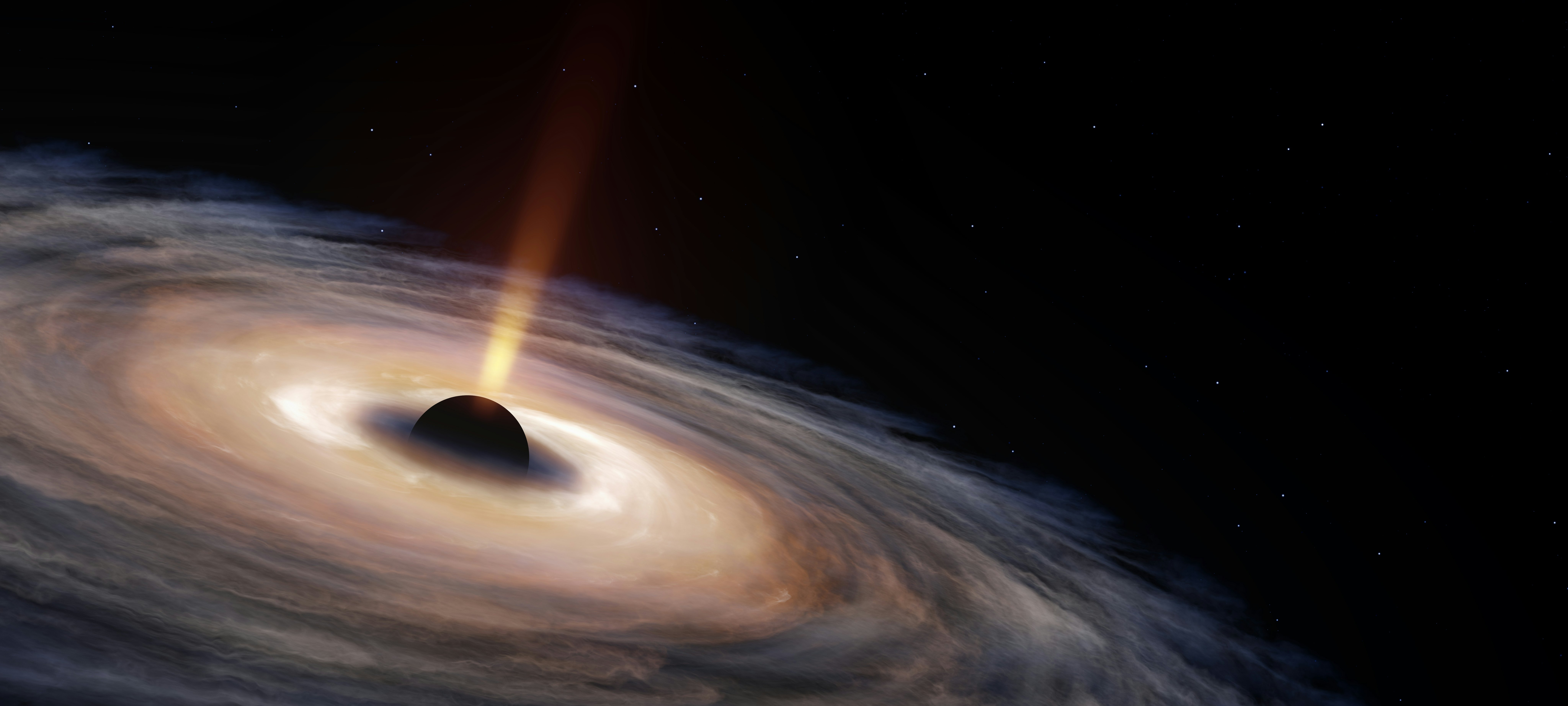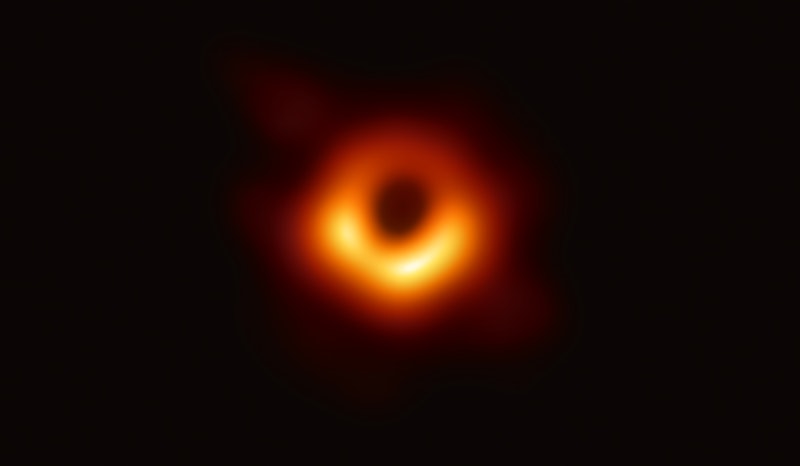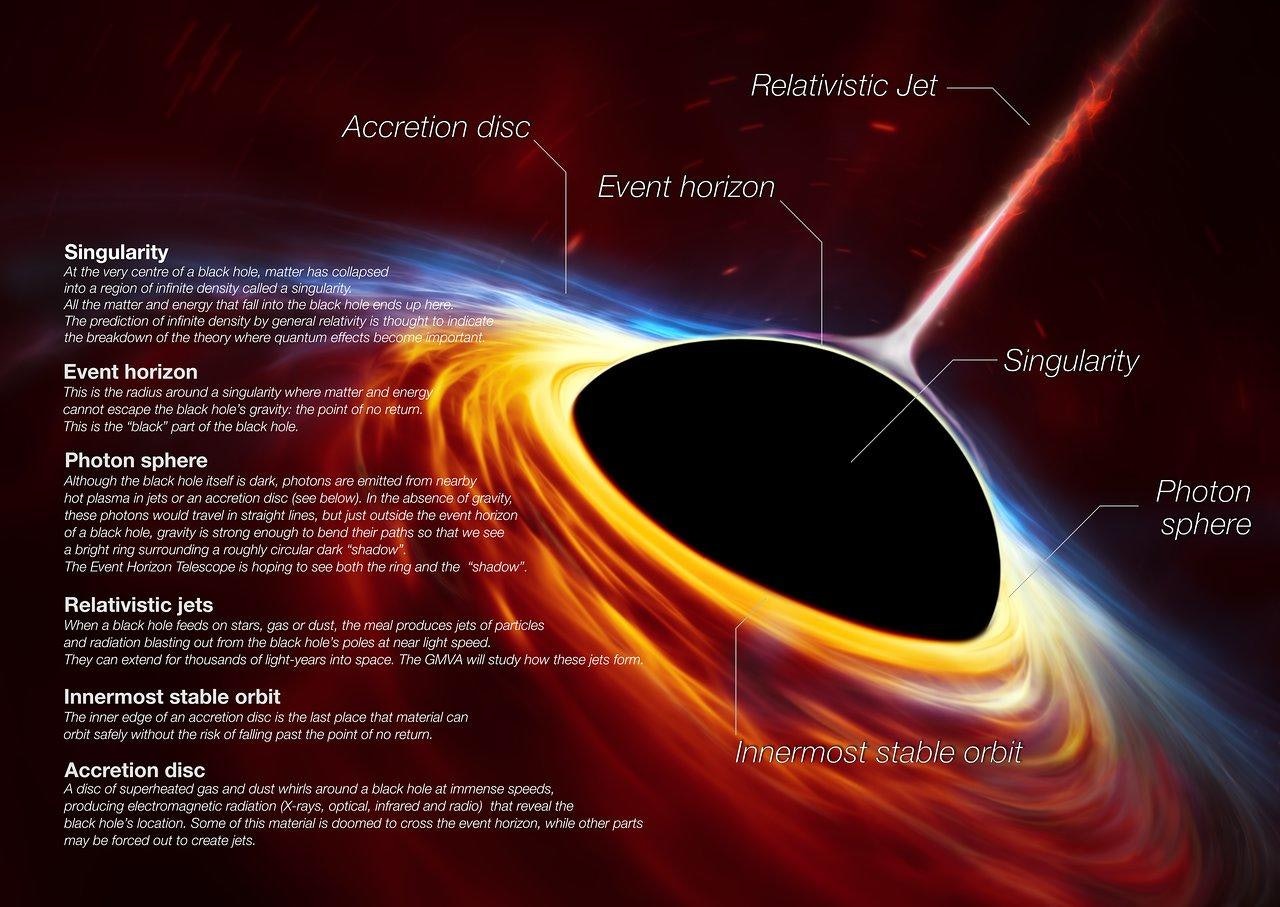
The first black hole image to ever be taken stunned the world three years ago, and scientists are excited for the next one.
When the Event Horizon Telescope (EHT) team released its first-ever black hole image on April 10, 2019, a supermassive black hole weighing 6.5 million solar masses came into focus. In the picture — painstakingly constructed by 200 researchers from eight telescopes performing four nights of research to capture six petabytes (1 million gigabytes) — we see a glowing ring and stark shadow marking an edge of no return. Beyond this threshold, known as the event horizon, the black hole produces a dark region in space where not even light can escape its grasp.
The Milky Way’s black hole will be next. But it will be trickier to see.

More than a pretty picture
A picture of a black hole is certainly worth a thousand words.
For one, it's precious. This scientific achievement is only possible by turning the whole planet into one massive telescope.
To make the 2019 image, EHT collected signals from eight ground-based radio telescopes across the globe and then synthesized this data to create a picture. This Earth-scale is necessary because while black holes are frighteningly powerful and massive, they are physically very small. The bigger the telescope, the smaller the object that scientists can observe.
Karl Schwarzschild drew on Albert Einstein’s theory of general relativity to theorize black holes in 1916, an idea Einstein rejected. While general relativity could be used to conceptualize black holes, the EHT confirmed an event horizon for the first time — and could allow us to make tweaks on the theory.
“Einstein’s general relativity, at some point, needs to be modified,” Kazunori Akiyama, EHT collaborator and astrophysicist at MIT Haystack Observatory, tells Inverse. “That’s actually the mission of modern physics.”
“The black hole images actually create a nice opportunity to test how accurately general relativity works, and simultaneously, what kind of modified general relativity can explain those images,” he adds.
So far, Einstein is still correct.
“It’s amazing to see it — to see that this effect is really how we expected it to look,” Sara Issaoun, EHT collaborator and NASA Einstein Fellow at the Harvard & Smithsonian Center for Astrophysics, tells Inverse.
Isaac Newton developed a concept of gravity centuries before Einstein. But the latter developed a mathematical theory suggesting that Newton’s theories didn’t work as well on cosmic scales.
A black hole could similarly find areas of Einstein’s theory of general relativity that need refinement by witnessing gravity’s “most extreme laboratory,” found at the event horizon of a black hole, Issaoun says.
Only one black hole has been imaged so far. But as more black holes get their headshots taken, EHT researchers hope to keep on “gingerly” walking in the footsteps of these scientific giants — including by looking at the closest supermassive black hole to Earth.

A tale of two black holes
Pulling off the image of the Milky Way’s central black hole, called Sagittarius A* (Sgr A*), will be difficult, because instead of looking out, we are looking inward.
The 2019 image shows bright gas spinning clockwise around a behemoth black hole located at the center of Messier 87 (M87), a galaxy located 55-million light years from Earth. EHT has taken two images of it. The second image added to what was known from the first picture, and helped scientists better understand the colossal jet of plasma spewed out by the supermassive black hole, a stream that stretches beyond the galaxy itself.
EHT targeted the distant black hole first because seeing Sgr A* is a bigger challenge, Akiyama said.
Sgr A* is significantly smaller than the one from M87, for example. The material at the edge of both black holes travels at the brink of light speed, but the stuff sloshing around the center of Sgr A* takes less time to go around. This causes the appearance of this glowing gas to change more often, making it harder to image. M87’s multi-million light-year’s distance from Earth makes it a relatively stable object in the night sky.
We can only look at Sgr A* edge on, too. Scientists think they know how to account for the large amounts of ionized gas in our galaxy that separates Earth from the black hole, but that material still complicates the imaging process.
An exciting future for EHT
By learning about a second black hole, the EHT team can see where black holes overlap in quality, but also how they differ.
The first image of Sgr A* could be ready as soon as this year, Issaoun said.
Katie Bouman, EHT collaborator and Professor of Computing and Mathematical Sciences at the California Institute for Technology, is also excited.
“As far as Sgr A* results, we hope to release our analysis of the data soon,” she told Inverse via email. “Stay tuned!”







